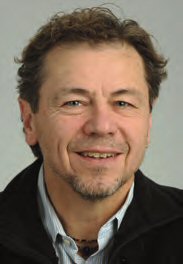
SEJ President’s Report
By DON HOPEY
Chattanooga is much, much more than a train song.
It sings a more complicated and well-orchestrated sustainability refrain.
Fifteen years ago, when SEJ paid its first conference visit to Chattanooga, and sustainability was still a murky buzzword on its way to theoretical concept in many other American cities, this once-tarnished “Buckle of the Bible Belt” was already on that track and well on its way to making it real.
This year’s 23rd SEJ conference, in Chattanooga Oct. 2-6, builds on and highlights that sustainability theme, which has entered its second generation and garnered worldwide recognition.
Although it was known as the “Dynamo of Dixie” during the 1950s and early 1960s when its prosperous persona was riveted to iron, steel, coal and chemicals, Chattanooga was a polluted mess by 1969 when Walter Cronkite, during an evening newscast, labeled it “the dirtiest city in America.” By 1983 it was an industrial wasteland and had a steep grade to climb.
The turnaround came via a sustainability-based urban recovery program that used visionary leadership and public-private investment partnerships to clean the air and water, direct redevelopment inward to the city center and open up the riverfront for public access and use.
Chattanooga then and now
By 1998, when SEJ arrived at this broad bend of the Tennessee River for the first time, there were already two made-in-Chattanooga electric buses purring through the city’s downtown, looping past the new Tennessee Aquarium, the largest freshwater fish bowl in the nation, and the refurbished Tivoli Theatre, which housed the city’s symphony and opera company. The Walnut Street Bridge, built in 1890, had been repurposed for foot traffic and linked to a new, five-mile long Riverwalk Park and marina. Plans were in place to clean up a two-mile-long section of Chattanooga Creek that was a federal Superfund site.
Just as important – some say more so – there was also a new, hard-won, public mindset that embraced sustainability as not just a means to an end, but an end leading to a new beginning.
“Sustainability isn’t the electric buses or the aquarium or the greenways,” David W. Crockett, then the City Council president and a leader with pioneering spirit, said at the time. “It’s a powerful concept. Its goal is cumulative prosperity and looking at things – the economy, environment, education, development – in an integrated way.”
Crockett acknowledged then that sustainability was an ongoing battle, and a raft of persistent problems shows it’s still a hard one to win. Chattanooga Creek cleanup and environmental justice remain mostly goals. So do links between ecosystem biodiversity and its role in creating a sustainable place where people want to live.
But there is little doubt that this city of 150,000 has carved itself a sustainable green niche that has allowed it to prosper on the knife edge of technology and economically sustainable environmental initiatives. Today, it proudly trumpets a new multi-faceted fiber optics program; energy-efficient LED street lights that can also act as air monitors and emergency alerts; the world’s first platinum-LEED-certified auto assembly plant, built by Volkswagen; a new saltwater aquarium; and “green” roofs and streetscapes.
Conference lineup draws on local resources, global expertise
Like the city, the conference builds around the sustainability theme but also features a strong and diverse lineup of speakers, plenaries, panels and field trips put together by conference director Jay Letto and conference chairs Anne Paine, recently retired from The Tennessean in Nashville, David Sachsman, West Chair in Communication and Public Affairs at the University of Tennessee at Chattanooga, and Pam Sohn, editorial page editor and former environment reporter at the Chattanooga Times Free Press.
The Thursday trips include opportunities to snorkel with rare darters in the gin-clear Conasauga River; tour Oak Ridge National Laboratory, where the atomic bomb was born and climate change research is booming; inspect the Sequoyah nuclear power plant and see the site of the 2008 Kingston coal ash slurry spill; and see how unmanned drones fly and why they’re not just for war anymore.
The speakers list is distinguished by its international, national and local flavor, including M. Sanjayan, the lead scientist for The Nature Conservancy, where he specializes in human well-being and conservation, Africa, wildlife ecology; and Crockett, whose namesake ancestor opened up the Tennessee frontier 200 years before he reopened the Chattanooga riverfront.
“I think there’s some very concrete things that have come from Chattanooga’s sustainability work,” Sohn said. “Is it the thing that has made the city successful? Maybe, maybe not. But there have been a whole lot of really good things that have come from it – the electric buses, aquariums, smart street lights. And the attitude. The auto manufacturer [VW] saw that and liked that, and decided to locate here.”
So maybe Harry Warren and Mack Gordon had it right in 1941 after all when they penned the music and lyrics for the city’s theme song and advised, “Get aboard... / All aboard... / Chattanooga choo choo / Won’t you choo choo me home.”
You’ll need to look up the train schedule yourself, but you can find the conference schedule and information at
Get there on time.
Don Hopey covers environment at the Pittsburgh Post-Gazette, and teaches at the University of Pittsburgh and the Pitt Honors College Yellowstone Field Course.
* From the quarterly newsletter SEJournal, Summer 2013. Each new issue of SEJournal is available to members and subscribers only; find subscription information here or learn how to join SEJ. Past issues are archived for the public here.












 Advertisement
Advertisement 



